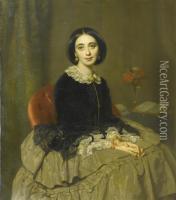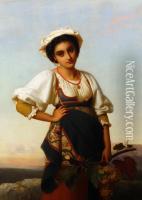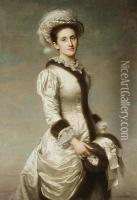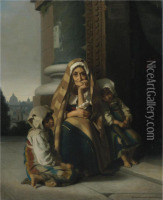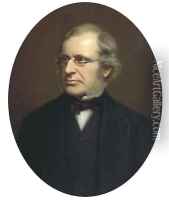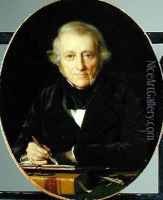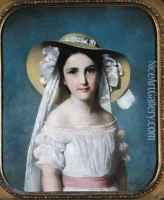Rudolf August Wilhelm Lehmann Paintings
Rudolf Lehmann was a German-born painter who achieved significant recognition in the 19th century, both in Germany and abroad. Born on August 19, 1819, in Kiel, in the Duchy of Holstein (then part of the Danish monarchy), Lehmann was part of a well-educated and culturally inclined family. His early exposure to the arts was nurtured within his family environment, which was conducive to his eventual career path as an artist.
Lehmann's artistic journey began with his initial training in Hamburg and continued as he moved to Paris to further his studies. In Paris, he became part of the vibrant artistic community, honing his skills and developing a distinct style that blended elements of the Romantic and Neoclassical movements. His talent was recognized early on, and he gained the opportunity to study and work alongside some of the era's most prominent artists.
In the mid-19th century, Lehmann relocated to London, where he established himself as a portraitist of high repute. His ability to capture the likeness and character of his subjects earned him commissions from some of the most notable figures of the time, including members of the British aristocracy and intellectuals. Lehmann's portraits were celebrated for their elegance, detailed realism, and expressive depth, characteristics that made him a sought-after artist among the elite.
Throughout his career, Lehmann maintained strong connections to his German roots and frequently traveled back to his homeland. His works were exhibited in both Germany and England, and he played a role in the cultural exchanges between the two countries during a period of burgeoning interest in the arts.
Lehmann's contribution to art was not limited to his paintings. He was also involved in the artistic communities of his time, participating in discussions and initiatives that aimed to promote the arts and support fellow artists. His legacy is preserved in the collections of major museums and galleries, where his works continue to be appreciated for their historical significance and artistic merit.
Rudolf Lehmann passed away on October 27, 1905, leaving behind a body of work that encapsulates the richness of 19th-century European art. Through his portraits, he captured the essence of an era, and his influence persists in the study and appreciation of portrait painting.


